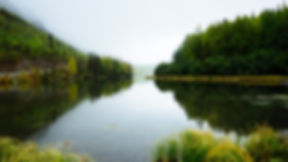
There’s over 4 million miles of road in the United States. We are tied to our vehicles like they are a part of our family. We even name our vehicles. Roads and vehicles are logistically essential for our technologically advanced fast-paced lives. When I was growing up, getting your license was the epitome of freedom —the “two lanes [that] take us anywhere,” as Bruce Springsteen says. To Americans, roads signify connection, ease, convenience, and escape. To other life-forms, though, they can spell death and division. Roadkill has surpassed hunting as “the leading direct human cause of vertebrate mortality on land.” More birds die on American roads every week than were killed by the Deepwater Horizon oil spill (which was about 800,000 birds). It has never been more dangerous to set paw, hoof, or scaly belly on a highway. A study in the journal Current Biology concluded that more than one million deer were killed on U.S. roads in 2022.
This all has to do with road ecology, which is a field of study that examines the ecological effects of how roads and traffic affect the movement, behavior, and survival of animals and plants, as well as the quality of water, soil, and air. The term was coined by Richard Forman who was standing in his Harvard University office with a few students in 1993, admiring a satellite photograph of a forest. Forman was discussing the forest’s features – where the water flowed, why people had put houses where they had, how the animals moved through it – when he paused. “I noticed the long slice going diagonally across the image,” he says. “It was a two-lane road through the forest. I said, gee, we know a lot about the ecology of everything else in this image, but we don’t know much about the ecology of that.” Inspired by inattention, Forman soon coined the term “road ecology.” (smithsonianmag.com)
Roads and highways can have dramatic effects on wildlife movement and landscape connectivity. Some species may have complete aversion to roads, which would limit their movement through landscapes with roads. Other species may try to cross roads even with traffic present resulting in wildlife mortality and risks to drivers. Just last week driving down Jones and Gifford Avenue, my daughter and I saw a duck and about 8 ducklings on the side of the road trying to cross. We stopped to try and help, but the steady flow of traffic ended up making it unsafe for my 4-year-old. Last summer, we helped a softshell turtle cross over I86 – right at Bemus Creek. Growing up in Alaska, my older brother hit a moose in our big ‘74 Chevy pickup and had to go to the hospital due to the moose shattering the windshield, denting in the driver’s side door, smashing the grill, and overall totaling our truck. I bet everyone has a personal story about wildlife that you or someone you know has either hit or just missed hitting. How many dead deer, racoons, opossum, or squirrels have you seen around Chautauqua County roadways?
We are making small steps towards progress though. Chautauqua Watershed Conservancy has partnered with Western New York Land Conservancy (WNYLC) and their Wildlife Occupancy Study for the WNY Wildway. Together, we have installed a wildlife trail camera at one of our nature preserves that borders a highway. WNYLC will retrieve the camera in October to fully assess the wildlife use in and around the highway. “Roads are so ubiquitous on the landscape, they really are everywhere, and they have real impacts on our wildlife, our ecosystems, and ourselves. These are systems and structures that we have built, and as we learn more about the problems they cause, we have an obligation to do what we can to correct the problems we’ve created. We can support our natural systems and keep people and wildlife safe successfully,” said Leslie Bliss-Ketchum the director of Samara Group, who we were luckily enough to have an insightful conversation with.
Hopefully, in the future, we can start focusing more on how we can make our heavily loved roads in Chautauqua County less of a killing zone and more of a joint tool that can be used by wildlife and vehicles alike.
For more info on the WNY Wildway project, visit: https://www.wnylc.org/wnywildway
Article by Bethany O'Hagan, Land Specialist

